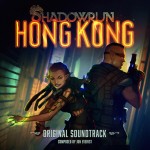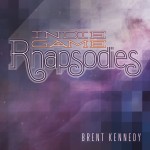Editor’s Note: We’d like to welcome Michael Hoffmann to our writing team! This young composer has his own blog, Video Game Notes, and has expressed interest in sharing his take on his peers’ work from time to time. He’ll also be doing some concert reporting, including a report on the recent BFIG “Boston Plays Indies” show that VGO, DJ Cutman and others performed indie game music live! We’re excited to have Michael writing on the site! He makes his debut with a review for the Monaco soundtrack. Enjoy!
When you think of music for a stealth/action game, what do you usually imagine? Perhaps some somber and serious orchestral scoring to provide a tense atmosphere. Maybe something more electronic and minimalist that builds in intensity as you delve deeper into enemy territory. Would you ever guess Ragtime music reminiscent of the silent film era? I must admit that when I loaded up the game Monaco: What’s Yours Is Mine, that was the last thing I was expecting to hear. Written by Grammy-nominated composer Austin Wintory, Monaco: What’s Yours is Mine OST provides a fresh new approach to music for the stealth/action genre.
More after the jump!
An out of tune upright piano takes center stage for this soundtrack, playing solo for all but a few tracks. Later pieces like “Discothéque Rouge” and “Centre Hospitalier” incorporate organ and vibraphone respectively. The album’s only vocal piece “Can’t Resist,” performed by Laura Vall, also provides some variety and reflects the mindsets of our main characters. The opening track “What’s Yours is Mine” sets the stage perfectly for what’s to come in the game. Fast paced and exciting, we are given the principle music theme that Wintory proceeds to tweak, transform, and call back to throughout the rest of the album. Wintory’s versatility is really on display here. Not only is he showing that he can jump to completely different genres of music writing, this being a huge departure from his orchestral music for Journey, but he is also able to maintain a lot of variety and interest in the music. He pulls this off even when limiting himself to one instrument for most of the soundtrack.
During actual gameplay, the soundtrack plays dynamically with the actions happening onscreen. When your character remains unseen, the music is calm and steady or it will just disappear completely. But when your character is spotted or trips an alarm, the music suddenly picks up and becomes more frantic and energetic. This gives the impression that someone is sitting at a honky-tonk piano improvising tunes to accompany your daring heist escapades. This element of the music is what instantly makes me think of the silent film era, in terms of the music’s style. Oddly enough this does clash a bit with the actual time period of the game. Monaco is a heist game set in more modern times, the buildings are armed with lasers and gun turrets, rather than an early 20th century setting that the music might suggest. Despite this minor nitpick, the music is very effective at enhancing the emotional thrills of sneaking around and outrunning the authorities.
In the actual album, the tracks usually play out all variations of the music for the level. This allows you to hear not just the contrasting sets of music that play in a level, but also allows you to hear the transitions from one set to another. A good example of this comes from one of my favorite pieces on the album. “False Teeth” starts up with a fast and frantic section before slowing down to a crawl (around 2:00). The piece then takes a more leisurely pace, with some restatements of the main theme, before shifting back into high gear (at 3:54) for a climactic finale.
What makes this soundtrack so engaging is the way in which Wintory sneaks in or introduces new variations on the main theme into the other tracks. Sometimes the references to the theme are quite subtle, while other instances bring it out in full force. I noticed that over the run of the soundtrack, the tuning of the piano slowly shifts to being more in tune. It was so gradual that I didn’t really notice it until I listened to a few of the tracks out of order. Whether this was something Wintory did to help keep the listener from suffering ear fatigue or if it’s an intended connection to some of the game’s overarching story elements, I can only guess.
Monaco: What’s Yours Is Mine OST is a unique and lively soundtrack. Despite limiting himself to using only one instrument for a majority of the album, Austin Wintory creates a surprising amount of content that never sounds repetitive or stale. The contrasting sets of pieces for each level flow well within the game, responding immediately to the players actions, and work well as stand-alone tracks on the album. If you enjoy Ragtime piano pieces, silent film era improvisation, or just some excellent chase music, I would recommend checking this soundtrack out.
The Monaco: What’s Yours is Mine soundtrack can be found and purchased on Austin Wintory’s Bandcamp site, on Loudr, or on iTunes.
Tags: Austin Wintory, Bandcamp, iTunes, Monaco: What's Yours Is Mine, Music Reviews, Piano, Ragtime, Reviews









































[…] of emails, I was brought on as a contributing writer. My first review, for the game soundtrack Monaco: What’s Yours is Mine, is already up on Original Sound Version with more on the way. It’s an honor to have been […]